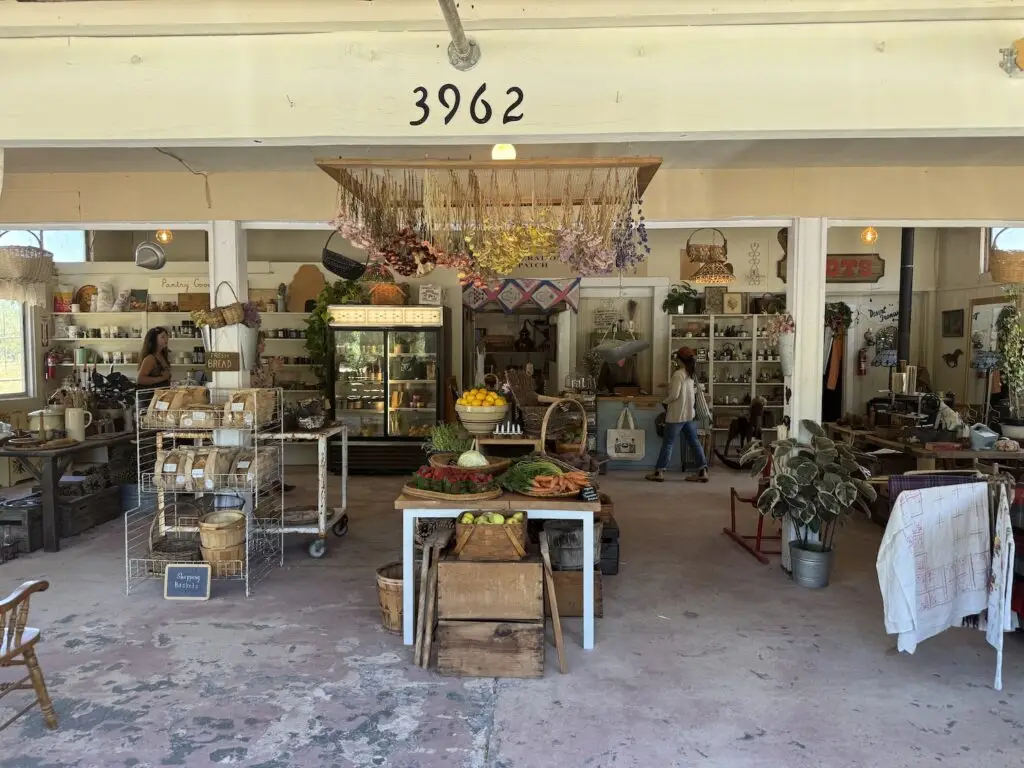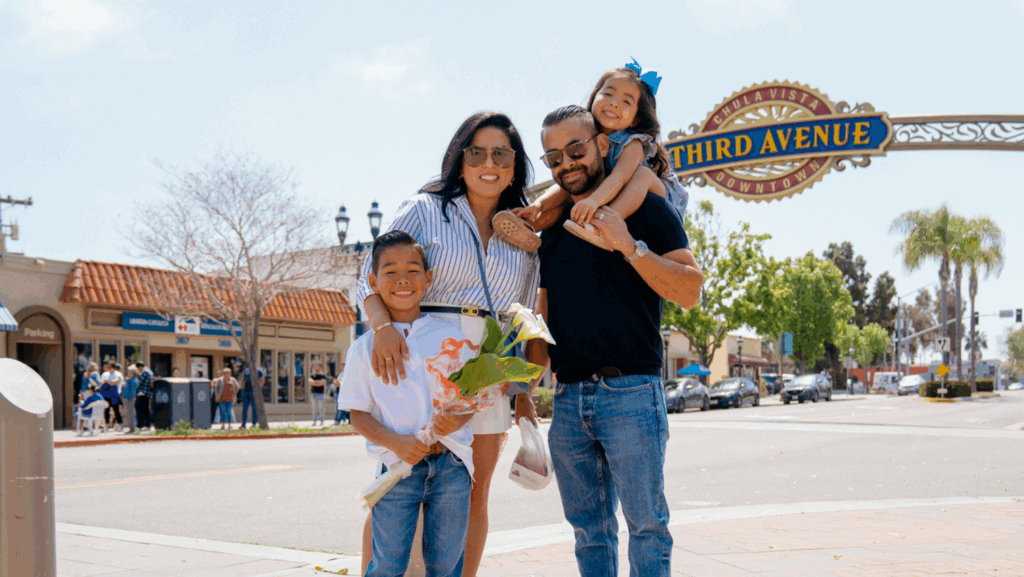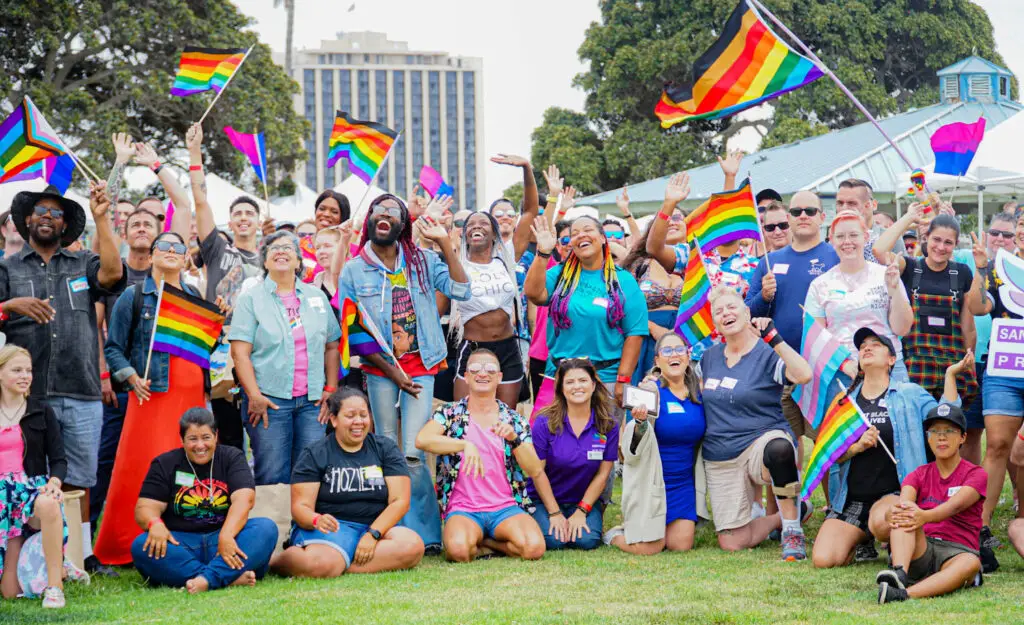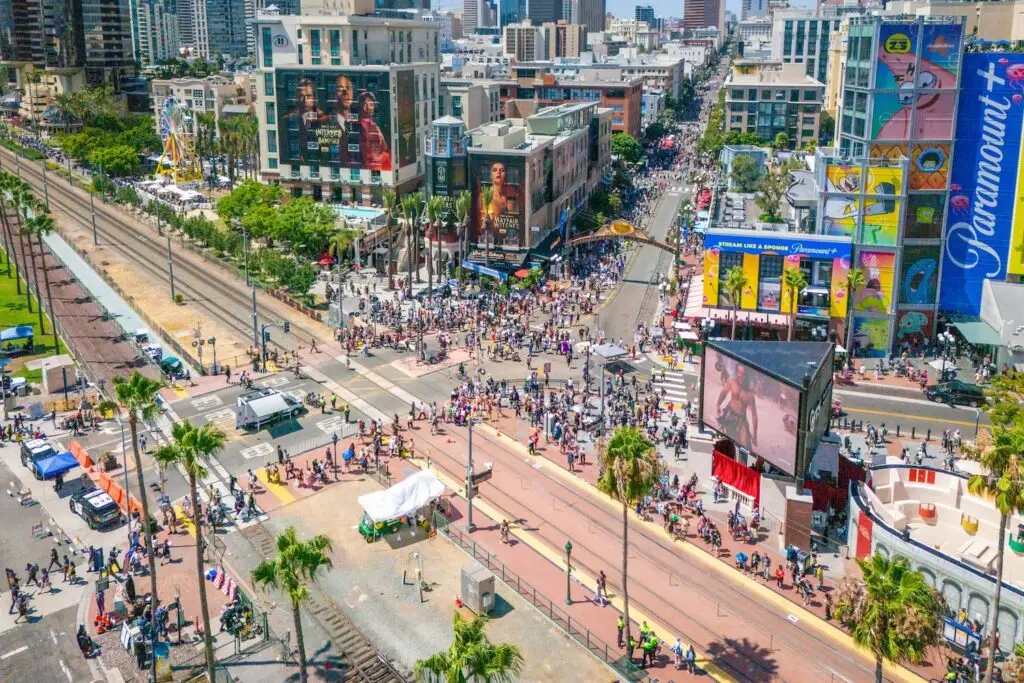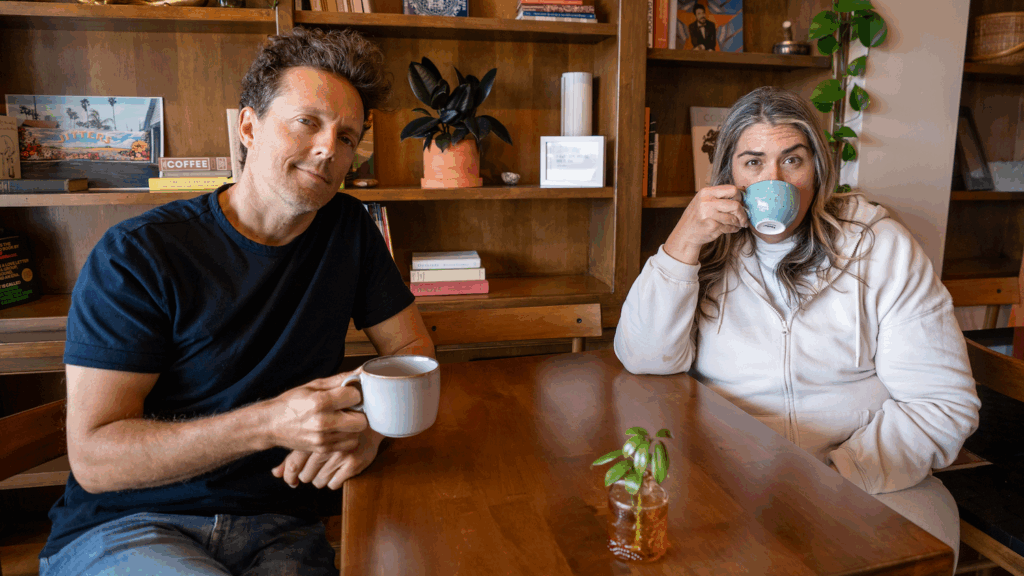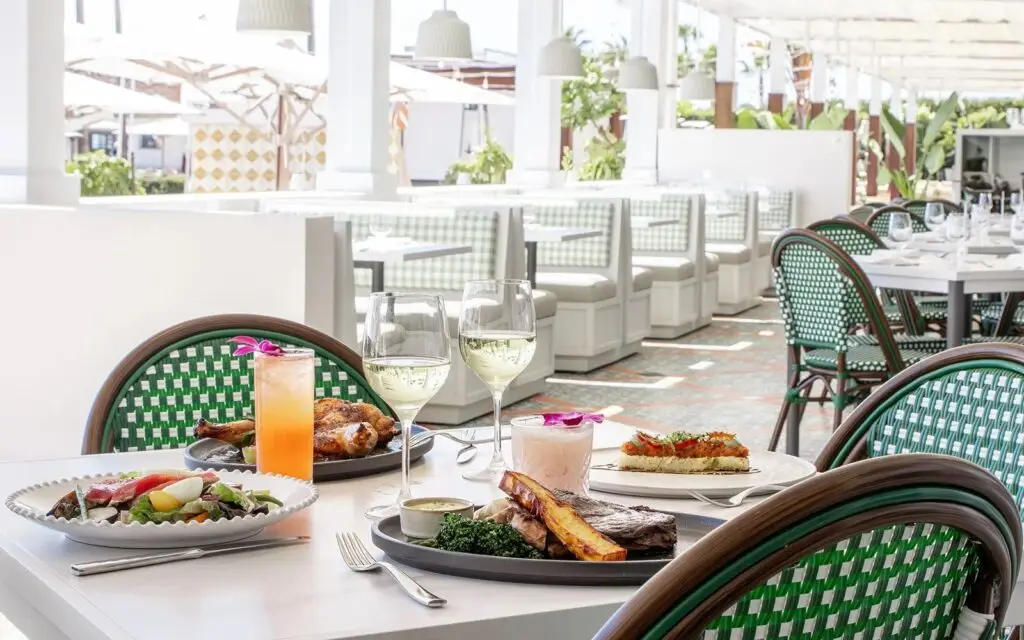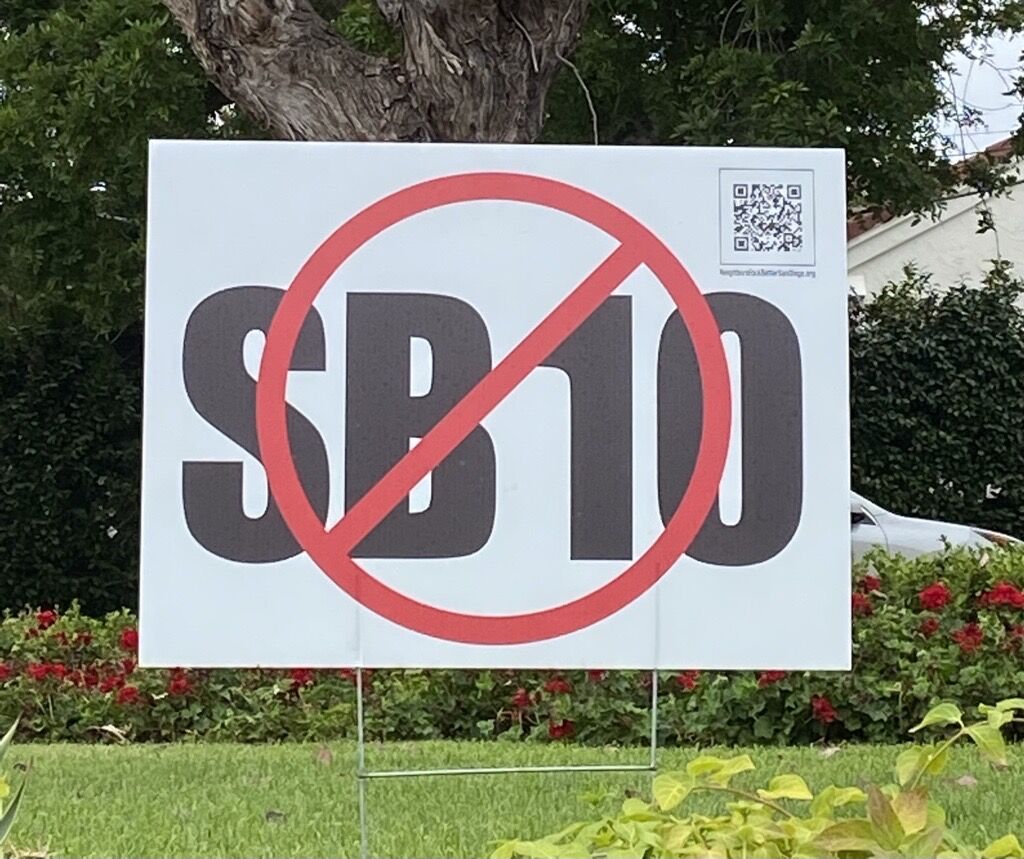
Signs opposing SB10 can still be seen in single-family neighborhoods throughout San Diego.
San Diego is in a constant state of evolution. Everyday a new construction project seems to appear, protected by new orange cones in the road. And while these headaches and changes are typically part of an effort to improve the city, not everyone agrees how best to do that.
What to build and where to build it remains a hotbed of debate.
Few topics create more economic and political friction in San Diego than housing. This became clear once again as the divisive Senate Bill 10 was kicked to the curb by the SD Planning Commission on August 3. SB10 is a state housing law that would allow re-zoning of single-family properties for multi-unit residences up to 10 units and three stories in Sustainable Development Areas (areas with proximity to public transit). The bill was signed into state law by Governor Newsom in 2021, but acts as a “voluntary law,” meaning that each city can choose to adopt it or not. However, once adopted, the law cannot be undone.
“With all the programs that have already been adopted over the last few years and the community plan updates that are going to be occurring, we’ve significantly raised the number of homes to be built, and in my opinion, SB 10 is not the right way to go,” Chairman William Hofman stated during the Planning Commission discussion. “I think we’re going down a wrong path here that we won’t be able to retreat from…there’s a reason no other city has adopted SB 10.”
San Diego nearly jumped on board, but instead, abandoned ship on the bill.
The City Planning Department initially included SB10 in its Housing Action Package 2.0, with hopes of creating more accessible and affordable housing, as well as increasing the land supply for new developments. The Housing Action Package 2.0 was presented to the Planning Commission on August 3, where it was approved and passed to the Land Use & Housing Committee for consideration in September.
The City Council will provide a final vote in October. SB10, however, did not make the cut.
After hours of public testimonials, SB10 was removed from the Package by the Planning Commission at the meeting. The Commission allowed for a “working group” to modify SB10 for future reconsideration, but no dates or details on the group were provided.
Reactions to the Planning Commission’s removal of SB10 were—predictably—mixed. According to some, SB10 could potentially provide real solutions for rising rents and a housing crisis continually pushing people into homelessness.
“At the end of the day, we are in a housing shortage, and housing policies like this would help create housing for all income levels and diverse communities,” said Angeli Hoyos, president of YIMBY (“Yes In My Backyard”) Democrats SD, a chartered democratic club made up of more than 100 volunteers.
Ricardo Flores, Executive Director of Local Initiatives Support Corporation San Diego (LISC) , believes that the bill would help fight systemic racism and classism.
“There is a deep split in our community,” he says. “We’re allowing white boomers to prevent accommodation for the growth of the more diverse and young population. SB10 would allow more diversity to enter these communities.”
But not everyone agreed SB10 would have been the right route to take.
As the date of the Planning Commission meeting loomed, concerned citizens made their voices heard against SB10 with public protests and opposing signs stuck firmly in lush green lawns across the city.
Some grassroots organizations, such as Neighbors for a Better San Diego (NFASD), have likewise taken a stand against the bill. Goeff Heuter, chair of the organization, describes it as a “watchdog role”—watching the policies the city is developing and reacting to them accordingly. From his observations, he concluded that the city was rushing into SB10 and disregarding the housing programs already in place.“We already have two ways people can develop in single family-zoned neighborhoods: the Bonus ADU Law and SB9,” he says.
Between these programs, NFASB estimates that more than one million homes can be built, far more than the organization believes is needed.
Regardless of their differing ideas, one thing these opposing groups have in common is their willingness to voice their opinions. Dozens of advocates and opponents attended the Planning Commission meeting to give public testimony and explain the urgency of either passing or rejecting the bill.
“The atmosphere in the room was very intense. It was overwhelmingly composed of SB10 opponents, and you could tell in the room that there was a generational divide amongst them,” YIMBY Democrat’s Hoyos described after the meeting. “It just shows that there’s a certain demographic that can actually take the entire day off to engage civically.”
During his own testimony, NFASB’s Heuter spoke against SB10. “The irreversibility aspect strikes us as undemocratic and entails a lot of risk,” he said. “To unilaterally adopt something that’s wildly out of scale with the neighborhoods into which it’s going to go and be irreversible by future City Council seems contrary to good governance.”Additional opposing speeches at the meeting mentioned clogged roads, safety concerns, lack of affordability requirements, and unattractive buildings emerging in quiet neighborhoods.
The Planning Commission ultimately sided with the anti-SB10ers.
PARTNER CONTENT
Despite the Planning Commission’s decision, advocates are still hopeful the city will create more affordable housing programs. “Now, it’s about getting the word out there, attending those workshops and ensuring they’re inclusive,” said Flores. “And pushing our Councilmembers to get this on the docket.”
For now, San Diegans await the Land Use and Housing Committee’s decision in September, while continuing to dodge cones in the road.

